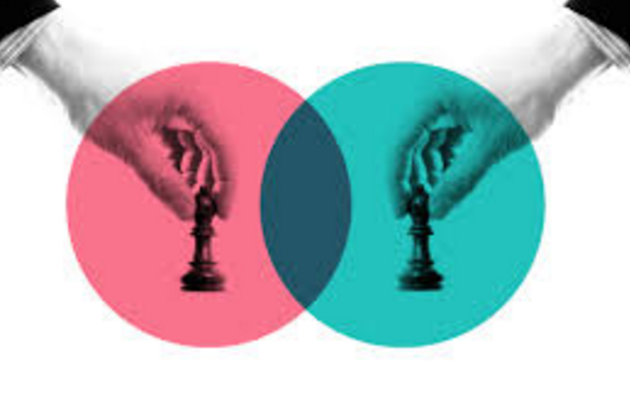How are your negotiation skills? Most art of negotiation secrets is a lost art as few modern Americans remain skilled at negotiating. We see a price and expect to pay that amount, with the exception perhaps of negotiating for automobiles and homes.

But even in those instances, you may end up paying more than you should, if you don’t know how to drive a hard bargain. The bottom line is if you want to be a better business person or just save money; you need to learn how to become a skilled negotiator. Here are some ways to do just that.
No negotiation should begin without your first spending time understanding who you are negotiating with, their patterns of behavior, their context, their constraints, and their drivers. Clearly, not all of that can be found just by researching the other party, but you’d be amazed at how much you can discover before even starting a negotiation.
Here is a short video that gives you a short overview of negotiating skills.
Discovery is also the first phase of the face to face negotiation process. You should constantly be looking for insights that help you better understand the other party.
The biggest challenge most of us face in a negotiation is that we create such a rock-solid rationale behind what we want and why we want it that we instantly discount if we even hear the other party’s needs. This is especially challenging if you have a Type A assertive and aggressive personality.
My suggestion? Shut up. I mean really shut up, until the silence is painful. I’ve found that saying nothing is almost always the best way to learn about someone else.
When you do talk ask questions that help you better understand the other party’s position. These are often best phrased in a way to help elaborate on points that may seem obvious “Can you explain more…” or “Help me understand that…”
Most people refrain from asking questions of this sort because they are so stuck on getting what they want. The best negotiators invest in understanding the needs and drivers of the other party. Do enough of this and one of two things happens, either you learn a great deal about the other party’s motivations and constraints or you challenge them enough that they start to questions their constraints. In both cases, you’re making progress.
Remember this above all … for any business transaction to be completed; the two sides need to get in balance.
Art of negotiation … learn to anticipate and use it to prepare
Before you go into any negotiation, make sure you have considered all variables which might arise. Should unexpected issues come up, end the negotiations and educate yourself on the new matter before rejoining the process.
Use the result to your advantage
The result bottom line is the “absolute worst deal you’d be willing to make” and should be an indicator of when to walk away before you invest your time and energy.
(Reference: Fredrik Eklund of ‘Million Dollar Listing’ shares his best .., http://www.businessinsider.com/fredrik-eklund-million-dollar-listing-best-negotiation)
The suggestion of walking away brings the negotiation to a screeching halt … the objective is that competitors will call back or suggest another idea. If they do, my strategy has paid off. If they don’t, walk from the room, leave the meeting, and consider another strategy to keep the negotiation from actually hitting the floor.
Art of negotiation tips … build on your confidence
Regardless of how badly you may need a certain outcome from your negotiations, never let the other parties think that you are desperate. Showing desperation puts you in a weaker position and gives the competition greater leverage over the situation.
Be the most patient
Never give clients the bottom line anywhere near the beginning Making clients wait a few hours to get close to a legitimate deal gets them a little frustrated, making them want what you’re after even more, and puts you in control. It also accomplishes three other goals:
Since it took so long, the impression is that there must be a lot of thought, knowledge, and research behind.
It is in writing, which makes it more solid, and truer like there is nothing else really to discuss.
It makes them want your product or services more.
Build a buffer
Never begin with your final offer. Give yourself a sufficient “cushion” between what you are asking for and what you want. This will enable you to make compromises without giving up anything important and demonstrates to the other party that you are flexible.

Be the world’s best listener
Watch the body language closely. Read what isn’t being said.
Negotiations are often emotional, so taking the time to acknowledge your counterpart’s feelings, rather than minimizing them, can help bring things into balance.
Paraphrase what was said, reflecting the last few words, asking open-ended questions to provide further insight, and encouraging by giving a head nod or saying “I see.”
Try to listen more than you speak; utilize silence and pausing; and build rapport and trust, which can lead to a better agreement.
Body language can affect the way information is received and presented. Fidgeting, nail-biting or twitching can indicate nervousness or lack of confidence. It could also distract others from what you’re trying to say.
Always negotiate in person
People are more connected to their phones and computers than ever, making it hard even to get them to meet in person. But it will be more effective when you do.
A great negotiator, when needed, uses his emotions, family, heritage, spirituality, body language, fashion, sexuality, humor, and everything else in between to win, to make a deal happen.
However, if the phone is your only option, note the importance of having an agenda, knowing what you want out of the call before making it, and using few words.
Shift the accountability (even if the person is not real)
When a deal or negotiation is not going the way you want, you can give yourself some leeway by putting the responsibility on someone else … even if you have to make the person up.
Keep it short and simple
Don’t say too much.
A classic response when going into neutral gear is a long blank stare across the table. This gets competitors confused and annoyed at the same time.
Being neutral and not reacting gives you the upper hand in the negotiation and gets the other side to work harder to get a response.
